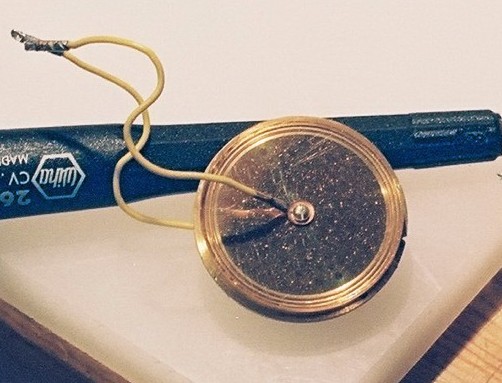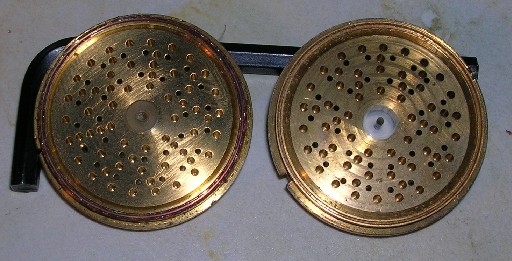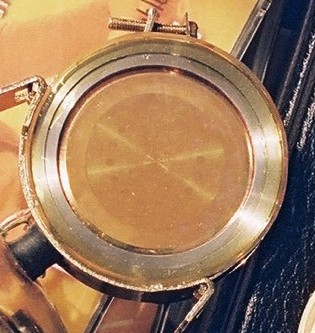This is the capsule off of an Apex 180. I am not sure the backplate is the source of the sound I don't care for on this mic. My feeling is the capsule housing has a resonance at about 8 kHz somewhere - possibly due to the very large distance from the sound opening to the diaphragm.
This is an AKG C1000 capsule and FET amplifier. I don't know what makes this mic as sucky as it is, but it is what it is. The electret material is coated on the backplate as a very thin layer. The capsule guts look a lot like the C451B capsule, which is not sucky at all.

And this is what 45 years does to a PVC capsule. This original M7 capsule (from a U47) has dried out, and the gold layer has cracked in several places. This makes the capsule have almost no output unless it gets damp. Then it works, until the dampness shorts it out.

This is what's behind the dried-out diaphragm. The one on the left is a Neumann M7, the one on the right is the Gefell version. Note the superior dimension control of the Neumann capsules. For my experience in machining, that can be attributed the the Gefell capsule being drilled with a normal (steel) drill bit, where the Neumann is likely drilled on a mill (not a drill press), with carbide or other very stiff drill bits.

Finally, this is a shot of a Sony C38 capsule, with its original polyester film diaphragm. This is a nice sounding mic capsule, simple to assemble, but the tube or amplifier needs special attention to be quiet, as its output is about 15dB lower than its M7 cousin as shown above.